All articles are free. However, your support as a paid subscriber enables us to continue producing high-quality, independent research on important health topics like EMF.
As an ad-free platform, we rely on the support of our readers to keep this content accessible and free from external influence.
Sign up for our EMF 101 Masterclass:
Part 1 of this exposé: How do children become addicted to cell phones?
Here’s what you’ll learn in this article:
1. How do childrens’ brains differ from adults?
2. How do babies’ brains hear the EMF of baby monitors?
3. What does playing video games do to the nervous system?
4. Why the hands are a gateway to anxiety
5. Will Parkinson’s become a young person’s disease?
6. How can we reduce stress by playing with our hands?
7. How do children stay addicted to technology?
8. How can we liberate our children from their digital prison?
9. JOIN the waitlist: EMF 101 Course
Did you know that children can absorb up to ten times more radiation in the bone marrow of their skulls than adults?
How do children absorb more radiation from cell phones than adults?
Children are not little adults.
The brain of a child contains more fluid and less fat, therefore absorbing more microwave radiation. In 1999, the Institute of Electrical and Electronics Engineers published a study1 showing how younger skulls absorb more radiation than adults. The engineers found that a child's skull is not only smaller and thinner, but matches the electromagnetic characteristics of soft tissue like the skin and brain.
Children also have:
smaller ears so a cell phone on the ear will be closer to the skull than a cell phone placed to an adult’s larger ear (which acts as a spacer between the brain and phone).
smaller heads with a shorter distance to brain centers.
an immature skull that contains more water, so the skull and adjacent tissues are more similar in a child than in an adult. This means that less radiation is reflected at the interfaces (greater reflection occurs at interfaces of less similar substances), so again, more radiation enters a child’s brain.
The following video shows how children absorb more radiation through a measurement known as SAR (specific absorption rate):
SAR measures the rate at which energy is absorbed per unit of mass by a human body when exposed to a radio frequency (RF) electromagnetic field (EMF).
For a primer on EMFs, you can read:
Born into a Space Colony
Before the 1800s and the advent of the light bulb, babies born on this planet slept while being lulled to the serene, ambient sounds of nature, playing in tune with Earth’s regenerative electromagnetic pulse known as the Schumann resonance. The Schumann resonance beats in rhythm with our brainwaves at 8 times per second.
In today’s modern world, baby monitors emit electrical frequencies that can agitate and harm a developing brain at 2.4 billion times per second!
Here’s an example of what a baby monitor sounds like to the brain:
Raised on a Play Space Station
Although it’s crucial to nourish our brains, our nervous system runs through our entire body, and needs support as well. One of the most densely packed areas of nerves are our hands. The representation below, called a cortical homunculus (“little human”) is based on a neurological "map" of the areas and proportions of the human brain dedicated to processing motor and sensory functions for different parts of the body.
Note the predominance of nerve areas stemming from our hands:
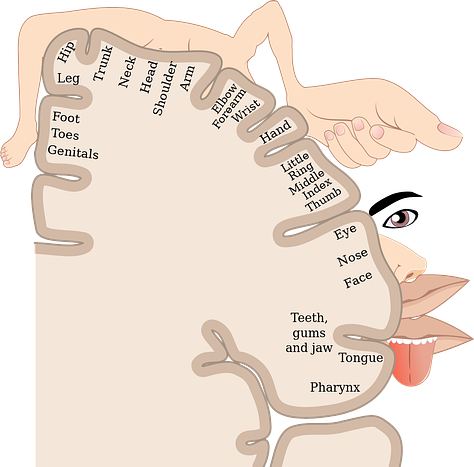
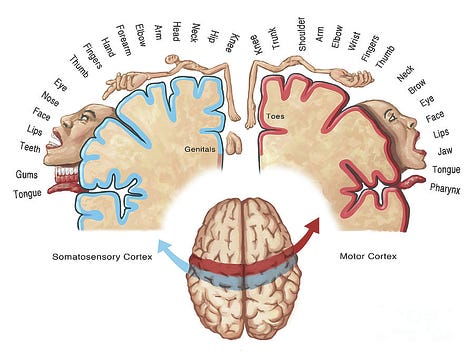

This is why it’s vital to keep ourselves engaged in cursive writing, playing musical instruments, gardening, sketching and painting as these activities stimulate both left (logical quality) and right (abstract quality) sides of our brain.
Whether it’s texting or playing on a Playstation video game controller, today’s children are mostly using their thumbs, thus disengaging most of their neural connections. Our children are becoming paler and more obese due to an increase in blue light exposure, which raises the stress hormone cortisol.
However they’re also developing new injuries like “playstation thumb”:
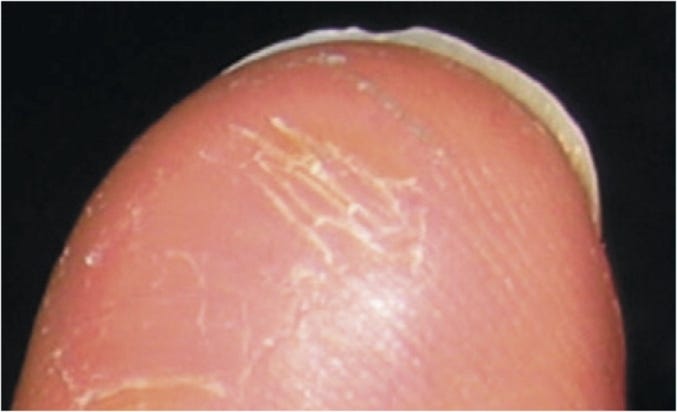
What happened to the good ole’ tobacco fingers?
I’m not a regular smoker, but personally I’d rather enjoy some organic tobacco over locking myself in a dark room, staring at a screen, and getting a crap sleep.
Sign up for our EMF 101 Masterclass today!
Do video games cause anxiety?
I remember being 13 years old and on the rare occasion, playing Super Mario Cart all night with my friends. All I remember is the feeling that I couldn’t stop myself. Then in my twenties a strategy game called Civilization came along, and I would be up all night saying to myself “just one more turn.”
I realized I had a problem when my work became affected and I began to gain weight. Fortunately I met my wife shortly thereafter and she was reason enough for me to stop.
Today’s youth play video games so much that their hands are developing inflamed and painful lumps, boils, and abscesses in or under the skin.
In a 2019 study2 by The International Journal of Pediatrics & Adolescent Medicine, researchers concluded that this swelling of the hands is caused by the “tight and continuous grasping of the hand-grips together with repeated pushing of the button” causing sweat glands to be blocked, combined with excessive palm sweat due to anxiety during the game.
Here’s how our brain perceives the electronic pulse of a Playstation controller:
Will children get Parkinson’s?
The following is an excerpt from
, from his website Out-Thinking Parkinsons , which is a treasure trove for anyone who is interested in learning how to optimize brain health:“Under chronic stress the use and senses of our hands become inhibited, as the body draws its energies inwards to protect vital organs: while we can survive the loss of a limb or two to a lion, we can't survive having our guts ripped open, so our fingers are de-prioritized from the brain and body's resources.
When unnaturally stressed too frequently or for extended time, due to the pressures of modern life for example, this loss of dexterity and proprioception (sense of relative position and effort needed to move) in our hands, and loss of senses of touch, can become permanent.
The nerve fibre connections responsible become harder to fire up as the networks of motor and sensing neurons continue to atrophy.
Indeed, the diminishing of the range of movement of the hands is one of the very first signs of PD: one of the earliest symptoms which become obvious in people developing PD manifests as handwriting getting smaller and smaller.”
How can we “interrupt” stress by playing with our hands?
Again, from Out-Thinking Parkinsons:
“The use of our hands for complex tasks is "stress interrupting", so using our hands in specific ways can be calming on the nervous system. This is especially true when using the hands for tasks which require use of other senses, such as hand-eye-co-ordination or clapping along to music, which bring into play other parts of the brain.
Indeed, those practices which we now know can delay the progression and aid symptom reduction in people with PD all appear to involve the hands intimately:
Riding bicycles, unlike walking, involves the handle bars and the breaks, while walking with poles and sticks seems to increase the benefit of that exercise. Tai-Chi, Yoga, Qi Gong, Gyrokinetics all also focus heavily on hand shaping and on the hands leading movements. Ballet involves the expression of the hands. Then there is boxing exercise, which is proving one of the most beneficial forms for PD, which could not be more hands focused.”
How do children stay addicted to technology?
Super Mario and getting a comment from a Super model on your Instagram feed are worlds apart. We used to be the ones who could control our Gameboy, and now the social game is running us.
The Silicon Valley executives behind social media platforms like Instagram created the “swipe down” to reinforce pathways of addiction that were based on 1938 research by American psychologist B. F. Skinner at Harvard University.
Operant Conditioning, which Skinner first made reference to in 1938, is a method of learning that occurs through punishments and rewards for behaviour. We gradually condition ourselves, and associate particular behaviours, like pulling a lever on a slot machine, with its consequence: winning rewards.
This is what makes entertainment like gambling, and new forms of technology, like social media, so enticing. We want to come back to them - again and again.
Formerly a design ethicist at Google, Tristan Harris is the director and co-founder of the Center for Humane Technology as well as the co-founder of the Time Well Spent movement. Harris coined the phrase ‘human downgrading’; a term that suggests that computers are actually transforming people’s lives for the worse.
“Each time you’re swiping down, it’s like a slot machine. You don’t know what’s coming next. Sometimes it’s a beautiful photo. Sometimes it’s just an ad.”
- Tristan Harris
From the article by
, Social Media and The Slot Machine:“What slot machines and social media share are variable rewards. This feeds into the ‘pull to refresh’ function. Every time we pull down to refresh our timeline—whether that’s on Facebook, Twitter or even by email—we don’t know what we’ll discover. That could be a new email from work, lots of surprising ‘likes’ or even disappointment should there be nothing fresh to excite us.
The downward-pull action, created by designer Loren Brichter, has been emulated across many different apps, and its ubiquity has become intuitive for its users. Being drawn into what’s called ‘ludic loops’—where a user is unsure whether they’ll receive feedback (or in the case of a slot machine, cash rewards) following anticipation—is what keeps us hooked. Or, as Harris says: pulling the lever.
For a sneak preview of our EMF 101 course, where we help you further understand how these addictive pathways work, and how to liberate your children from the cycle of addiction:
How can we get our children out of the digital prison?
Similar to becoming healthier through nutrition, less is often more. First we must remove what is no longer essential, so that we can then optimally absorb the absolutely necessary.
For instance, did you know that blue light in children lowers their ability to handle UV light. Blue light from screens destroys growth hormone, and UV light builds and regulates our hormones.
To fight inflammation, and increase UV light absorption, children need to expose themselves to early red and infrared light. Early morning light also boosts our stores of subcellular melatonin, which even babies can receive in a mother’s Sunny womb.
Thank you so much for taking the time to read our work. Please feel free to email us anytime, and we’ll do our best to get back to you within 48 hours. You can also leave a comment, which we’ll eventually respond to as well!
Just…one…more…click…
Did this article “click?”
For more background on how social media came to run our lives, you can check out our recent podcast episode:
We are more powerful than you know.
andIf you’ve found this article valuable, would you consider sharing it?
We’re creating a course on EMF!
How can we measure EMFs in our environment?
How does the wiring in our homes lead to cancer?
What are some other ways we can nourish the electric field of our body?
I’ll be covering these types of specifics, along with practical steps we can take to reduce EMFs in our daily lives, in the Wireless Health & Safety course I’m creating.
Start educating yourself today with ancestral strategies!
Check out our 5-Part series on how to treat damage from EMF.
EMF Health Forum: Please share your story
If you suspect that you or your animals are suffering from symptoms related to EMF, I strongly encourage you to register and post symptoms on EMF Health Forum, which I recently created to track the global fallout from wireless radiation:
Support Decentralized Medicine: Donate in Bitcoin
Send to our BTC Address!
bc1qfwtn8f95z7urkgfgj8c9t6dt3lay0shtgazr72
The new 5G meter by Safe Living Technologies is out!
Additional Resources:
Article on blue light and hormones:
C. E. Fernández-Rodríguez, A. A. A. De Salles and D. L. Davis, "Dosimetric Simulations of Brain Absorption of Mobile Phone Radiation–The Relationship Between psSAR and Age," in IEEE Access, vol. 3, pp. 2425-2430, 2015, doi: 10.1109/ACCESS.2015.2502900.
Kyriakou G, Glentis A. Skin in the game: Video-game-related cutaneous pathologies in adolescents. Int J Pediatr Adolesc Med. 2021 Jun;8(2):68-75. doi: 10.1016/j.ijpam.2019.09.002. Epub 2019 Sep 6. PMID: 34084875; PMCID: PMC8144863.


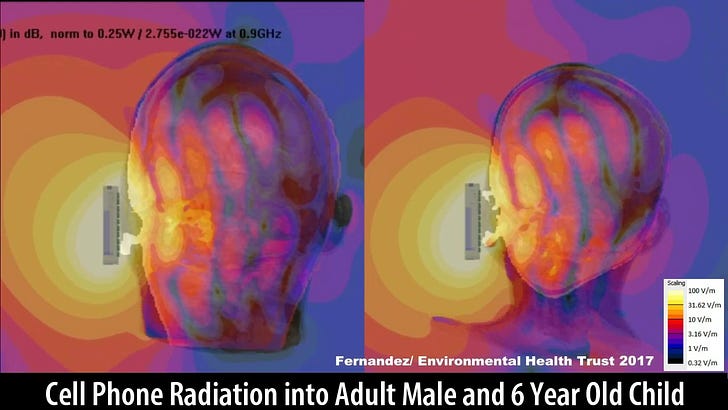

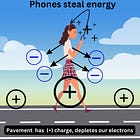


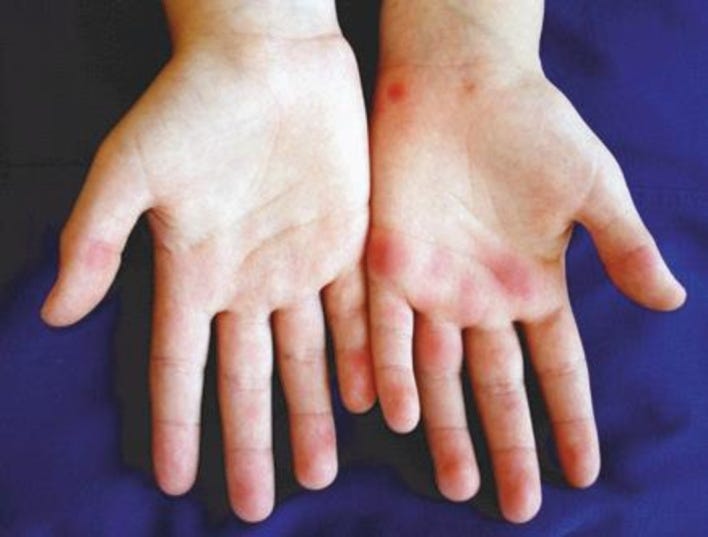






The hardest part: de-addiction. Which has a lot to do with parents being willing to be good responsible parents - not easy when you have allowed your child to become addicted.
Thanks Roman please see my questions below. Also u say U.v can supply 2.3 of energy can u recommend a u.v.b lamp.bulb to also get 66 p.c. energy?